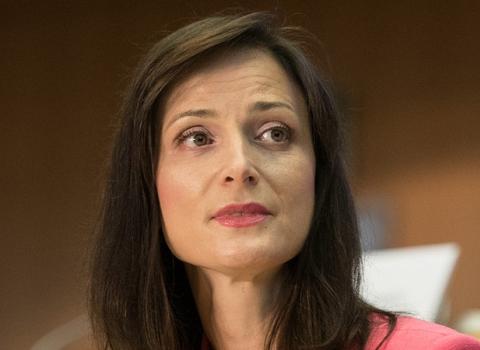John Shiver, PhD, Senior Vice President, Vaccines Global R&D at Sanofi, discusses the mechanics of developing a vaccine in response to a pandemic and why he believes it can be done in time to stop the spread of COVID-19.
The rapid spread of the COVID-19 virus across the globe has spurred governments and the pharmaceutical industry worldwide to pull together and attempt to stop a pandemic in its tracks. I joined one of these collaborations at the White House with President Trump; a vaccine against the virus was front and center of the discussion and it was heartening to see the show of solidarity and collaboration among the business and government leaders who were present.
I have spent more than 29 years in vaccines research and development, working to help prevent the spread of disease. I have been on the front lines against diseases including HPV, rotavirus, shingles and influenza. With the emergence of COVID-19, the public health community is doing what needs to be done in moments like these: marshaling resources, coordinating responses, recommending how to stop transmission of the disease and treat the afflicted. Those of us who work on vaccines are doing our part as well.
Fighting an emerging pandemic is an enormous undertaking requiring the entire pharmaceutical “ecosystem” to come together at pace and at a scale that are both extraordinary.
Developing and manufacturing vaccines is a complex journey. It normally takes considerable time to produce, test, package and deliver high quality, safe and effective vaccines that protect public health. Because the industry is pursuing new methods to combat COVID-19, widespread, accelerated success will be challenging but can be accomplished when science, manufacturing and regulators work with urgency toward a common purpose.
There are three reasons to be confident that it can be done
First, work on the development of a COVID-19 vaccine has already begun with the entire industry pooling their plethora of skills and technologies to find a solution in the shortest time possible. This includes biotechnology firms, government labs, and large pharmaceutical companies like my employer, Sanofi. Hundreds of leading experts around the world are, as we speak, putting in countless hours to analyze and neutralize the virus. And they are making progress.
Second, development and manufacturing processes are more streamlined thanks to recent advancements in recombinant DNA vaccines that my company and others are using. Vaccines are highly complex to manufacture, but with new technologies, acceleration to readiness is possible.
For example, with recombinant DNA technology, the genetic information for the virus is inserted directly into insect cells, then harvested and purified. The technology produces an exact genetic match to proteins found on the surface of the virus. This technology could enable the introduction of a vaccine against COVID-19 much more quickly than would be the case with traditional vaccine production methods. This is the same technology we are currently using for one of our licensed influenza vaccines.
Last month, my company, along with other leading vaccine producers, entered into a partnership with the United States Government’s Biomedical Advanced Research and Development Authority (BARDA), to select the COVID-19 strain sequence used in the design of the vaccine candidate, utilizing this recombinant technology. This public-private partnership is a critical investment in basic science combined with regulatory decision-making to accelerate the development of a vaccine. This is a high-priority program for us, and teams have been established to focus solely on this effort. We are also prepared to collaborate with other companies where it makes sense.
As well as using new breakthroughs, we are also building on previous efforts to fight pandemic disease with vaccines such as the work we and other companies did on SARS. COVID-19 belongs to the same family of coronaviruses as SARS. Leveraging this previous SARS work and our recombinant vaccine platform may unlock a faster path forward for developing a COVID-19 vaccine, allowing for the rapid production of large quantities of the COVID-19 antigen.
Third, if we can develop a safe and effective vaccine, the global pharmaceutical industry has the capacity to make and deliver it. My company alone has the established capacity and infrastructure to make up to 600 million doses in two existing facilities based in New York and Pennsylvania, without compromising the supply of vaccines for other illnesses, including influenza. Other companies have similar capacity. A vaccine will only be effective if we can make and distribute adequate supply.
But drug development always requires that we balance the desire for speed in response to an immediate need with safety–especially since vaccines are given to healthy people.
One thing is certain: investments in science and strong public-private partnerships will be vital not just in fighting COVID-19; this will not be the last new virus we see. But the progress we make today in technology, process improvement, and partnerships will also help us respond better to future crises while we mobilize to fight this one.
This communication was first published 23 March 2020 by Sanofi.




 A unique international forum for public research organisations and companies to connect their external engagement with strategic interests around their R&D system.
A unique international forum for public research organisations and companies to connect their external engagement with strategic interests around their R&D system.